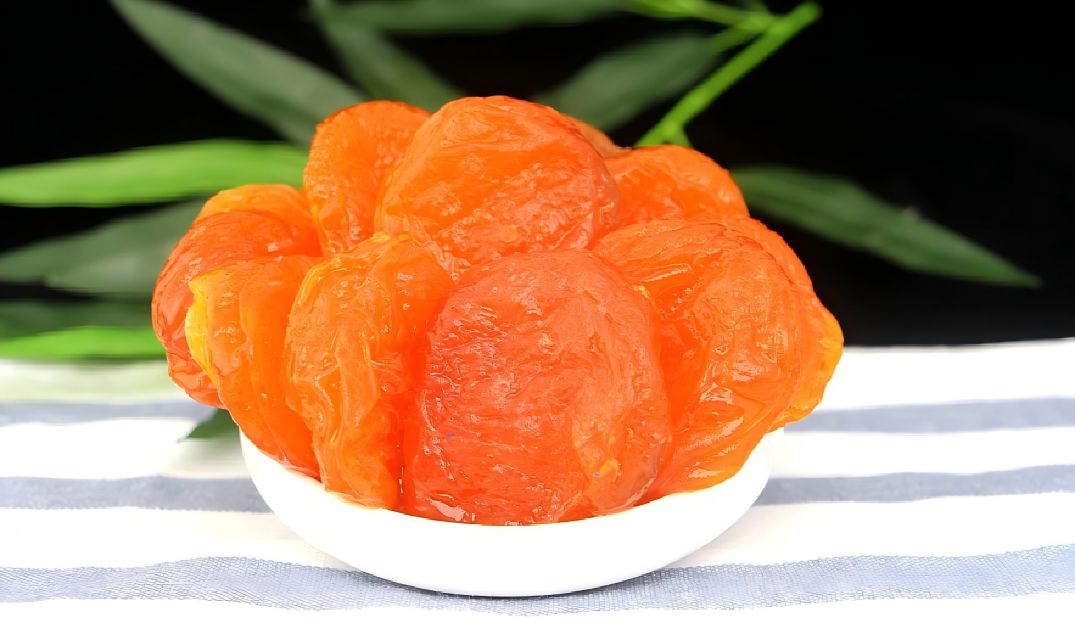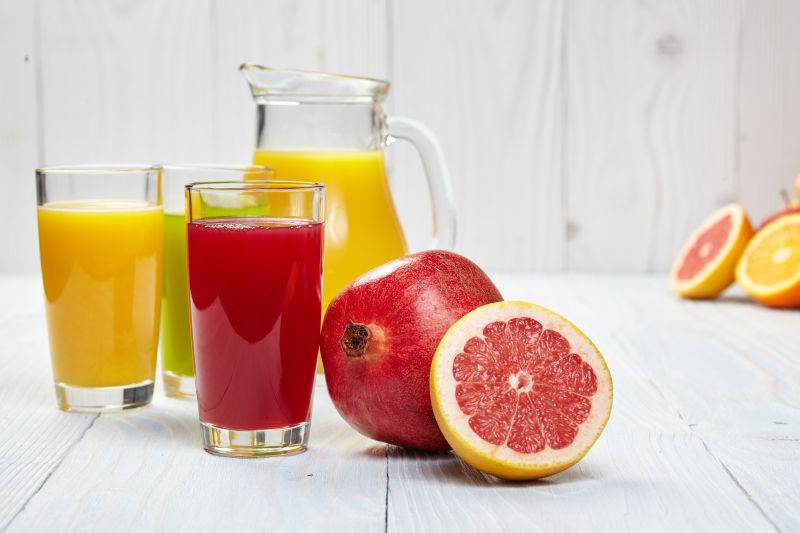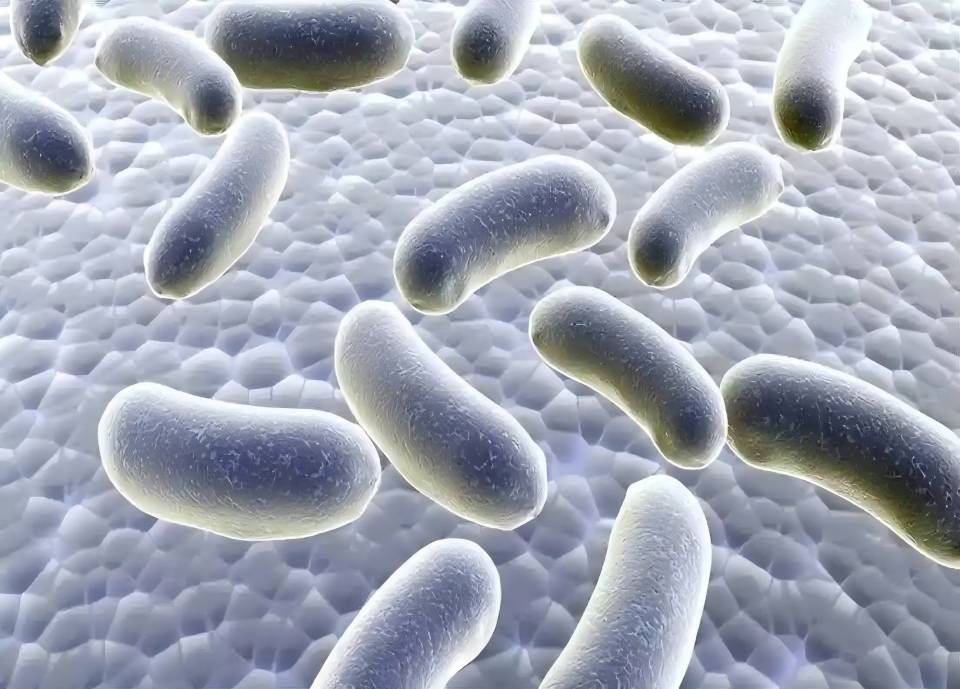Xylitol Is What?
Xylitol is one of the most commonly used sugar substitutes in life. It is widely used and has great development prospects. In recent years, xylitol has become popular worldwide, and its ability to prevent tooth decay has also been recognized. Xylitol itself is a type of sweet-tasting compound with high nutritional value that can be obtained naturally and is an important intermediate in glucose metabolism in the human body.
The article mainly describes the discovery of xylitol, its principle of action, structural characteristics, and the preparation technology of xylitol, etc., and also provides a necessary explanation of the latest application of xylitol—its protective function.
Xylitol, chemical formula C5H12O5, is widely found in birch trees, oak trees, corn cobs and sugarcane waste, and can also be used as a natural sweetener. Xylitol has been used as a food additive for more than 100 years abroad. With the development of science and technology, xylitol has become one of the indispensable and important raw materials in the modern food industry, and it has a wide range of uses. It is especially commonly used in the food industry. Xylitol is a white crystal or crystalline powder that dissolves easily in water, slightly in ethanol and ethanol, with a melting point of 92°C-96°C and a boiling point of 216°C. The pH value of the solution is between 5.0 and 7.
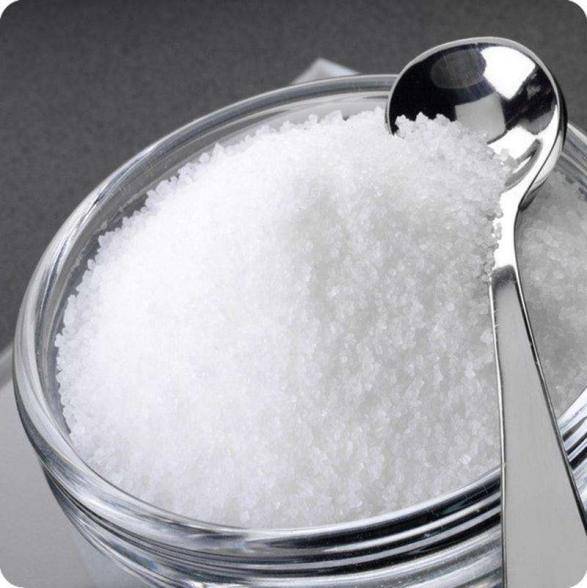
Xylitol is as sweet as sucrose, but when dissolved in water it still absorbs most of the heat energy, making it the type of sugar alcohol sweetener with the highest heat absorption coefficient. Xylitol is non-cariogenic and has a preventive effect against tooth decay. Its metabolism is not controlled by the body. It is the best sugar substitute for people with high blood pressure. It is completely metabolised in the body, has a caloric value of about 10 kJ/g, can provide calories and can also be used as a source of energy for people with high blood pressure.
1. The discovery of xylitol and the history of research into its functions
1.1 The discovery of xylitol and research into its sweetener properties
Xylitol was discovered in 1890 by the German chemist Fisher and Stahe and the French chemist Bertrand in the reaction of xylose with sodium amalgam. Fisher was awarded the Nobel Prize in Chemistry in 1902 for this discovery.
In 1943, xylitol was discovered for the first time in birch trees in Finland.
In 1962, physiological processes involving xylitol were discovered in mammalian tissue. Xylitol was recognized as a natural physiological compound. In the same year, xylitol was introduced into parenteral therapy (infusion therapy). Xylitol can be administered to critically ill patients, which shows that it can be metabolized efficiently by the body.
In 1963, after being approved by the US Food and Drug Administration, xylitol could be officially used for special dietary purposes.
Twenty years later, in 1983, the Joint Expert Committee of the World Health Organization/Food and Agriculture Organization (JECFA) declared xylitol to be a safe sugar.
1.2 Research into the cariostatic function of xylitol
The first study on the effect of xylitol on dental plaque was carried out in 1970 by Professor Kauko K. Mäkinen of the University of Kuopio in Finland. Professor Kauko K. Mäkinen found that xylitol increased saliva production and thus prevented tooth decay.
In 1975, the clinical results of Professor Kauko K. Mäkinen's research were published. Professor Kauko K. Mäkinen received the Apollonia Award from the Finnish Dental Association. This was the first time the award was presented and it was intended to recognise outstanding dental research. Professor Mäkinen's outstanding contribution to xylitol research is indelible.
The first commercial xylitol chewing gum was launched in Finland and the USA almost simultaneously in 1977, the year the Finnish chemist's patent for producing xylitol was approved. Since then, dental health authorities in various European countries have also endorsed the use of xylitol, and research into its functions and findings have continued to be supplemented.

In 1990, the world's first xylitol mouthguard was launched in Finland, as data had shown that prolonged chewing of chewing gum was associated with symptoms of loose or inflamed jaw joints.
In 1997, new research showed that pure xylitol products could significantly prevent ear infections in children.
2. Properties and functional characteristics of xylitol
2.1 In food
Xylitol is 1.3 times sweeter than sucrose and is almost as sweet as sucrose, so it can be used in place of sucrose in a 1:1 ratio. However, xylitol only provides 10 kg/g of energy, which is 40% lower than sucrose, so it has become a good substitute for sugar in the production of low-energy desserts. Sugar-free foods made from xylitol have appeared on the market, which are very popular with modern young people who want to lose weight and lead a healthy lifestyle. At the same time, xylitol muffins most closely resemble cakes when compared to maltitol, mannitol and sorbitol, and the hygroscopicity of xylitol also improves the flavor. The use of xylitol in food also benefits the microbiological stability of the dessert and the shelf life of the finished product. This is because at the same concentration, the activity of xylitol in water is lower than the activity of sucrose in water. Xylitol is the best substitute for dessert sugar.

2.2 Human body
Xylitol can be added to oral care products, so that acidic microorganisms in the mouth cannot use xylitol. In the human body, after slow digestion and absorption, xylitol can be quickly absorbed and used by cells through cell membranes, without relying on insulin metabolism, so it does not cause rapid fluctuations in blood sugar. Therefore, xylitol is often used as a sweetener for people with high blood pressure. Due to its antioxidant properties, xylitol can eliminate free radicals and control their formation.
Experiments conducted by Iowa State College in the United States showed that in patients with lung infections, the salt concentration in the airway mucosa, which was originally twice as high as normal, quickly returned to normal after xylitol was taken orally. This shows that although xylitol does not have antibacterial properties, it can prevent respiratory tract infections.
In recent years, with the deepening of research, it has been discovered that xylitol can form complexes with free calcium ions to promote calcium absorption and reduce loss, stabilize insulin, protect the skin, and reduce blood infection from oral microorganisms.
2.3 Physical and chemical properties
In addition, xylitol is relatively stable and almost inert, so it can be heated to completely melt (melting point 95°C) without causing other changes.
3. Xylitol production
3.1 New methods and current situation of xylitol production
Today, xylitol used in industry is obtained by hydrogenating pure D-xylose under high temperature and pressure with nickel as the catalyst. This method has poor reaction conditions, high production costs, poor safety and resource losses. Scientists are actively looking for biological methods. Bioconversion has become the best method for xylitol production due to its advantages of mild conditions, stable quality and high safety. Xylitol is produced by microbial fermentation during the bioconversion process.
Microbial fermentation can use hemicellulose from plants such as straw, corn cobs, and sugar cane waste as raw materials. Through hydrolysis and fermentation, high-purity, high-quality xylitol can be produced on the one hand, and agricultural waste can be fully utilized on the other, turning agricultural waste into high-value-added xylitol, reducing economic costs and increasing profits.
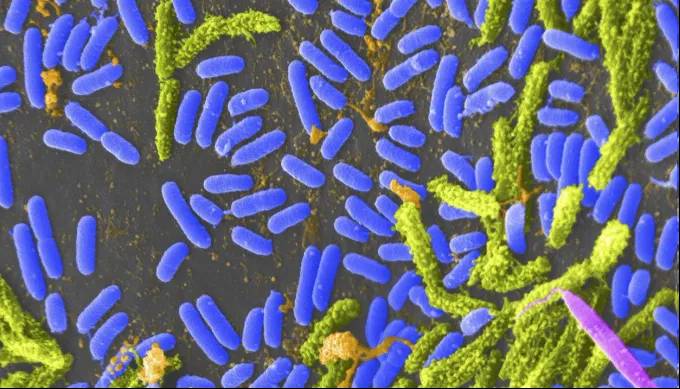
The basic principle of microbial fermentation is to use the xylose reductase in microbial cells to reduce xylose to xylitol. There are a large number of microorganisms in nature, such as yeasts, fungi and bacteria. Among them, yeast has attracted much attention due to its abundant resources, wide sources, rapid growth and strong processing capabilities. In recent years, with the rapid development of biotechnology, the use of microbial fermentation to produce xylitol has become a new way. At present, more than 30 countries and regions around the world have carried out research on the production of xylitol from yeast. In practical applications, the technology of preparing xylitol by biological fermentation is still in the laboratory stage. There are widespread problems such as a lack of strains, low xylose utilisation, low xylitol production, and difficulties in recycling xylose, which limit the popularisation and development of microbial fermentation in industrialisation.
3.2 External conditions affecting biological fermentation
3.2.1 Initial xylose concentration
Xylose is used as a reaction material and also provides energy for microbial growth and metabolism. When the initial concentration of xylose is low, it can promote the fermentation of xylitol by yeast cells. Xylose has good stability in liquid culture media and gradually degrades as the culture time increases. However, a high initial concentration of xylose will lead to an increase in the osmotic pressure of the fermentation liquid and substrate inhibition, which is not conducive to the production of xylitol. Different strains of bacteria do not have exactly the same requirements for the initial xylose concentration, so the actual fermentation process should be carried out by testing to determine the optimal concentration based on the specific situation.
3.2.2 Dissolved oxygen
The amount of dissolved oxygen is one of the key factors determining xylose fermentation or respiration, which then regulates the balance between carbon consumption for growth and bioconversion. It has been found that the dissolved oxygen required for bacterial growth is different from that for xylitol accumulation. When there is plenty of oxygen, the bacteria grow quickly, but the xylose conversion rate is low; under limited oxygen conditions, xylose is easily converted to xylitol, and ethanol production is low. As with ethanol and butanol fermentation, the effects of culture conditions on xylitol fermentation are complementary, and they work together during the fermentation process.
3.3 Improvements to the technology
3.3.1 Modification of the fermentation process
Most of the biological reactions in xylitol production are carried out in batch fermentation, and few batch or mixed fermentations have been reported. The feedstock of this invention can obtain high substrate concentrations and further improve the yield of xylitol. The use of chemically hydrolyzed cellulose as a fermentation substrate can also effectively reduce the toxicity of inhibitors.
As industrial production is moving more towards batch fermentation, cell recovery has become a problem in increasing xylitol production. The progress of the xylitol extraction process from both microbial fermentation and enzymatic methods is reviewed. Among them, the bioconversion method using microorganisms as raw materials is currently one of the most commonly used methods in industry, and further research directions are proposed on this basis. Cell immobilization technology has been widely used in the biological fermentation process for the preparation of xylitol due to its special advantages, such as high cell concentration, short duration of growth arrest, fast reaction speed, good repeatability, low cost, strong enzyme stability, reduced loss of enzyme activity, enhanced anti-pollution ability, etc.
Other modification processes include: adding co-substrate to the fermentation process, using mechanical agitation, ultrasonic assisted mechanical agitation and other methods to enhance stress response and change the permeability of the cell membrane.
3.3.2 Strain modification
In addition to improving cultivation conditions and fermentation processes, it is also possible to modify the structure of the bacteria themselves to obtain strains that produce higher levels of xylitol, such as through traditional physical or chemical mutagenesis of the bacteria.
For example, Chen Xuesong, an academician at Zhejiang University, and Yang Shengli, a PhD, published an article entitled “Mutagenesis and Selection of High-Yield Xylitol Strains and Optimization of Fermentation Media”. The article explores the xylitol conversion rate of strains obtained through early natural screening by compound mutagenesis, and optimizes the nitrogen source and inorganic salt content in the fermentation medium on this basis, with the aim of laying a technical foundation for later industrial applications. In the experiment, the strain type was selected – the main strain type started with the xylitol-fermenting bacterium Y-3 (xylitol conversion rate 36.5%) – and subjected to comprehensive ultraviolet and chemical mutagenesis breeding and selection. Finally, a new xylitol-producing probiotic strain with higher yield was obtained through two rounds of comprehensive mutagenesis breeding, with a xylitol conversion rate of 54.5%, an increase of 49.3% compared to the original starting strain.
4. New applications of xylitol – the environmental benefits of xylitol
With the increasing demand for metal compounds, large amounts of heavy metals have entered the land in mining areas in different chemical forms. In particular, after the 13th Five-Year Plan, the Chinese government has put forward higher requirements for the ecological restoration of mining land, which has led to the reasonable control of heavy metal pollution in mining soil becoming a major issue. At present, among the current soil heavy metal disposal and processing technologies, chemical disposal and processing technology has been widely used due to its low cost and quick results. Among these, extraction is a commonly used and mature chemical processing method.
Soil leaching refers to the process of injecting or percolating a washing solution into the soil, allowing it to flow through the soil layer to be treated, analysing the pollutants in the soil, and then treating and reusing the washing solution containing the pollutants. Research on single eluents has shown that heavy metal ions can be removed using a variety of chemical reagents such as EDTA and saponins. However, due to the diversity of heavy metals in mine soil, the effect of a single eluent is relatively small.
In recent years, we have found that if the synergistic solvent effect mechanism of a complex eluent is used, various eluents can be applied purposefully to perform complex reactions, thereby jointly completing the biochemical treatment of various non-ferrous heavy metals and other harmful soil substances. When the eluent is used at a low dose, it can not only achieve the highest removal effect of non-ferrous heavy metals in the soil, but also reduce the harmful effects of the eluent on the biochemical properties of the soil and the bacterial population.
In the paper “Leaching effect of xylitol-based end-carboxylated hyperbranched polyester/L35 composite leaching agent on heavy metals in contaminated soil in mining areas” by Dr. Li Meilan and others, xylitol was used as the intermediate core, citric acid as the comonomer, and xylitol-based end-carboxylated hyperbranched polyester (HBP-COOH) was successfully prepared by melt polymerization. xylitol-type hyperbranched polyester (HBP-COOH) was successfully prepared by melt polymerization, and the leaching effect of the produced HBP-COOH and its combination with L35 on different environmental Cd, Pb and various metal plates in the tailings pond area under different conditions was analyzed by oscillating leaching. The main research results obtained through practice and research are: xylitol-based end-carboxylated polyester/L35 composite leaching agent has a stronger leaching effect on contaminated soil and non-ferrous heavy metals in mining areas.
5. Development direction and significance of xylitol research
In recent years, xylitol has been shown to improve dental health, reduce blood lipid accumulation, enhance bone strength and increase exercise capacity. Xylitol is also a functional sweetener that is widely used in various foods as a substitute for high blood pressure and obesity.
There are six main types of bacteria in the intestine, including bifidobacteria, streptococcus lactis and other beneficial bacteria. Microecological preparations in the intestine, mainly short-chain enterococci, can improve the intestinal environment. Xylitol and dietary fibres such as chestnut polysaccharides are important prebiotics. However, because it cannot be directly absorbed and used by the body, it can only exert its prebiotic effect as a carrier for microorganisms, which limits its scope of application in foods and also affects people's understanding of the function of prebiotics.
At present, research on xylitol and its effect on the digestive tract microflora shows that although xylitol has a good regulatory effect on the gastrointestinal flora, especially in the diagnosis and prevention of some diseases, there is insufficient research on the underlying mechanism of xylitol and its effect on probiotics. Therefore, the key to current research on xylitol is to explore its prebiotic effects, sites of action and modes of action through modern biological techniques, to discover more of its prebiotic effects and help further expand its scope of application. The great potential of xylitol has also opened up new ideas and thinking for the cause of environmental protection.


 English
English French
French Spanish
Spanish Russian
Russian Korean
Korean Japanese
Japanese